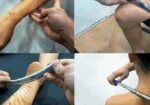Ultimate Guide to Continuing Ed for PTA and OTA in 2025
Filed under Uncategorized
Introduction to Continuing Education in Allied Health
Continuing education is more than just a regulatory requirement—it’s a critical step in growing professionally, staying up to date with evolving treatments, and ensuring the highest level of patient care. For Physical Therapist Assistants (PTAs) and Occupational Therapy Assistants (OTAs), CEUs (Continuing Education Units) serve not just as a way to meet licensing requirements, but also to elevate your practice, broaden your knowledge base, and increase your job market competitiveness.
As the healthcare field rapidly evolves, ongoing education ensures you remain competent in evidence-based practices. Whether you’re working in outpatient rehab, skilled nursing, or pediatrics, investing in the right CEUs can make all the difference.

Why Continuing Education is Required for PTAs and OTAs
Continuing education is mandated by most state licensing boards to ensure that licensed professionals remain current in their knowledge and clinical skills. For PTAs and OTAs, CEUs are:
- Legally required to renew your license every 1–2 years.
- Clinically necessary to keep up with new research, technology, and treatment protocols.
- Professionally valuable in opening new career paths, such as management or specialty roles.
For instance, a PTA working in sports rehab may need to stay updated on therapeutic modalities, while an OTA in a school setting might benefit from courses in sensory integration or autism interventions.
Differences Between PTA and OTA Continuing Ed Requirements
While both roles involve hands-on therapy support, PTA and OTA CE requirements can differ:
| Category | PTA | OTA |
| Licensure Body | State PT Board | NBCOT & State OT Board |
| Renewal Frequency | Every 1-2 years | Every 1-2 years |
| Typical CEUs Needed | 20–30 hours | 24–36 hours |
| Ethics Requirement | Yes (most states) | Yes (some states) |
| State Variability | High | Moderate |
Always verify with your specific state licensing board to understand local rules and deadlines.
Accredited Providers for PTA and OTA Continuing Education
Choosing an accredited CEU provider ensures that your credits will count toward license renewal and professional development.
American Physical Therapy Association (APTA)
- Offers evidence-based courses tailored to PTAs.
- Discounts available for members.
- Offers live, virtual, and hybrid CEU events.
National Board for Certification in Occupational Therapy (NBCOT)
- Maintains strict standards for CEUs and recertification.
- Offers Navigator tools for career-specific learning plans.
State-Specific CEU Requirements for PTA/OTA
Understanding your specific state’s continuing education requirements is essential to ensure your license remains active and valid. Requirements can differ widely depending on where you practice.
Here are a few examples:
| State | PTA CEU Hours | OTA CEU Hours | Renewal Cycle |
| California | 30 hours | 24 hours | Every 2 years |
| Texas | 20 hours | 30 hours | Every 2 years |
| Florida | 24 hours (includes 2 hours in laws & rules) | 26 hours | Every 2 years |
| New York | 36 hours | 36 hours | Every 3 years |
Tip: Visit your state board’s website regularly, as rules may change.
How to Choose the Right CEU Course
With thousands of CEU options available, selecting the right course can be overwhelming. Here’s what to look for:
- Accreditation: Ensure the course is approved by APTA, NBCOT, or your state board.
- Specialization: Choose topics aligned with your area of practice (e.g., pediatrics, geriatrics, sports rehab).
- Learning Format: Do you prefer self-paced, live webinars, or in-person workshops?
- Cost vs. Value: Don’t always go for the cheapest option—make sure the course adds real value to your skill set.
- Reviews: Look at feedback from other therapists on platforms like Reddit or Facebook groups.
Continuing Education Topics in High Demand
To stay competitive and relevant, consider taking courses in trending and high-impact topics such as:
- Evidence Based Taping
- Orthosis/Splint Fabrication
- Hand Anatomy and Kinesiology
- Acquired Neurologic Injuries
These topics are not only CEU-eligible but also highly applicable in most rehab settings.
Tips for Balancing Work and Continuing Ed
Managing full-time work and CEU deadlines can be a challenge, but with smart planning, it’s completely doable.
- Set a monthly goal: Break up your CEU requirements into monthly goals.
- Use your commute: Listen to audio courses or podcasts related to therapy while driving.
- Talk to your employer: Many facilities provide paid CE days or tuition reimbursement.
- Batch your learning: Use weekends or downtime to complete multiple modules at once.
- Choose hybrid formats: Combine in-person and online courses for convenience.
Free vs. Paid CEU Options
Not all quality education has to cost a fortune. Here’s a breakdown:
Free CEU Sources
- APTA Member Webinars
- State PT/OT association events
- Manufacturer-sponsored courses (e.g., therapy equipment vendors)
- Government training platforms like CDC and NIH
When Paid CEUs are Worth It
- Specialty certifications (e.g., neuro or ortho specialties)
- High-quality clinical case studies
- Hands-on practical workshops
Pro Tip: Paid platforms like Hand Therapy Academy sometimes offer discount codes or employer-sponsored memberships—ask your HR department.
How to Track and Report CEUs Correctly
Proper documentation is key during license renewals or audits. Make it a habit to:
- Keep digital and paper copies of all CEU certificates.
- Log your hours using tools like:
- APTA’s CEU Tracker
- NBCOT’s “MyNBCOT” portal
- APTA’s CEU Tracker
- Check your renewal deadlines in advance.
- Report early to avoid last-minute tech issues with online portals.
Employer Reimbursement and CEU Support
Many hospitals, clinics, and school districts offer support for continuing education. Here’s how to access it:
- Request early: Submit course info to HR at least 30 days in advance.
- Provide cost-benefit analysis: Show how the course benefits your role.
- Use education stipends: Some jobs offer $500–$1000 annually for CEU reimbursement.
- Organize group training: Employers may pay for in-house CE events if multiple staff attend.
Benefits of CE Beyond Compliance
Continuing education goes far beyond meeting your license requirements:
- Boosts your resume with specialty certifications
- Improves patient outcomes through evidence-based care
- Increases job satisfaction by reigniting your passion for therapy
- Opens new doors to leadership, teaching, or mentoring roles
- Keeps you connected to the latest advancements and peer communities
Frequently Asked Questions About Continuing Ed for PTA and OTA
1. How many CEUs do PTAs and OTAs need per year?
It depends on the state. On average, 20–30 hours are required every 1–2 years. Always check with your state board.
2. Do online CEUs count for license renewal?
Yes, as long as the provider is accredited and accepted by your state board.
3. Can I carry over extra CEU hours to the next cycle?
Some states allow limited carryover, while others do not. Check with your local licensing board.
4. What happens if I miss my CEU deadline?
You may face penalties like fines, license suspension, or the need to take additional hours to reinstate your license.
5. Are CEUs required for both national and state renewals?
Yes. CEUs are required for state license renewal and optional for NBCOT or APTA certifications, depending on your goals.
6. Where can I find free CEUs for PTAs and OTAs?
Check APTA/NBCOT sites, local therapy associations, and platforms like MedBridge, which occasionally offer free trial courses.
Conclusion and Next Steps
Staying current through continuing ed for PTA and OTA professionals isn’t just about checking a box—it’s an opportunity to grow, specialize, and deliver better care. Whether you’re renewing your license, looking for a new niche, or just refreshing your skills, make CEUs a part of your long-term career strategy.
Next Steps:
- Identify your state’s CEU requirements.
- Choose 2–3 online platforms to explore.
- Ask your employer about reimbursement.
- Schedule your CE hours before your renewal window closes.
More To Read
What is the Effectiveness of IASTM?
Citation Kim, J., Sung, D. J., Lee, J. (2017). Therapeutic effectiveness of instrument-assisted soft tissue mobilization for soft tissue injury: Mechanisms and practical application. Journal of Exercise Rehabilitation, 13(1). doi: https://doi.org/10.12965/jer.1732824.412 The skinny IASTM is a relatively simple technique that uses the surface of an instrument to minimize the amount of pressure or force needed…
Read MoreArticle Review: Best Edema Management Techniques in Hand Therapy
Miller, L. K., Jerosch-Herold, C., & Shepstone, L. (2017). Effectiveness of edema management techniques for subacute hand edema: a systematic review. Journal of Hand Therapy, 30(4), 432-446. doi: http://dx.doi.org/10.1016/j.jht.2017.05.011 By: Ammie Ingwaldson The Skinny Edema is something therapists deal with on a daily basis and often is apart of most treatments. Managing edema can be a challenge…
Read MoreArticle Review: Relative Motion for Extensor Tendon Repair zone V-VI? Is a night-time resting hand orthosis beneficial?
Hirth, M. J., Hunt, I., Briody, K., Milner, Z., Sleep, K., Chu, A., Donovan, E. & O’Brien, L. (2021). Comparison of two relative motion extension orthotic programs following surgical repair of finger extensor tendons in zones V-VI: A randomized equivalence trial. Journal of Hand Therapy-to be published. The Skinny: Following a zone V-VI tendon repair,…
Read MoreThe Importance of Purposeful Activities Following Surgical Repair of a Distal RadiusFracture
By: Kelsey Melton Collis, J. M., Mayland, E. C., Wright-St Clair, V., Rashid, U., Kayes, N., & Signal, N.(2022). An evaluation of wrist and forearm movement during purposeful activities andrange of movement exercises after surgical repair of a distal radius fracture: A randomizedcrossover study. Journal of Hand Therapy. https://doi.org/10.1016/j.jht.2022.07.009 The Skinny: This randomized crossover study…
Read MoreSign-up to Get Updates Straight to Your Inbox!
Sign up with us and we will send you regular blog posts on everything hand therapy, notices every time we upload new videos and tutorials, along with handout, protocols, and other useful information.






